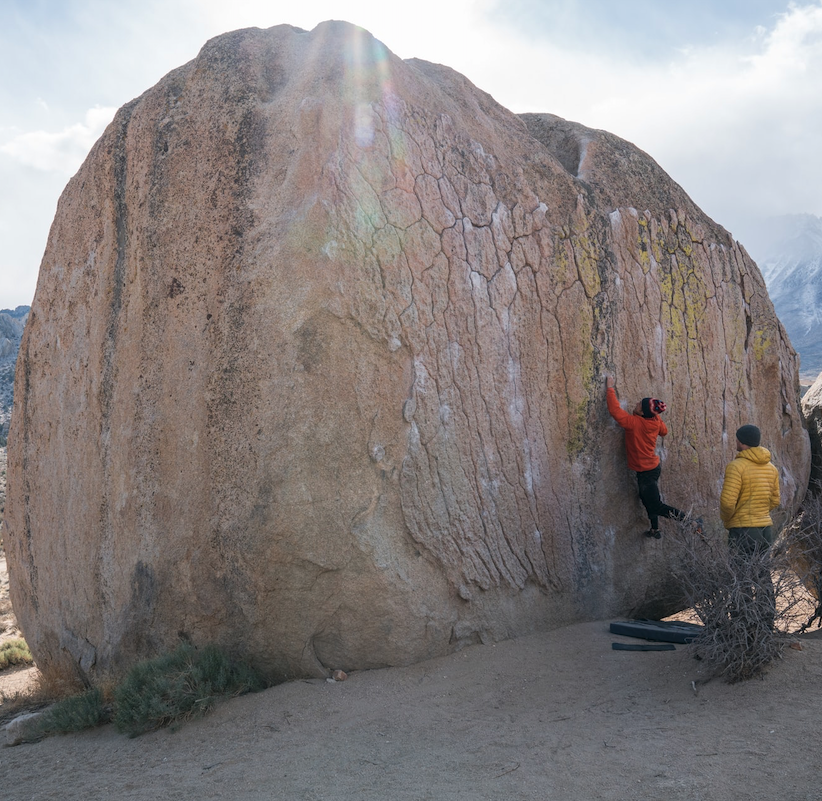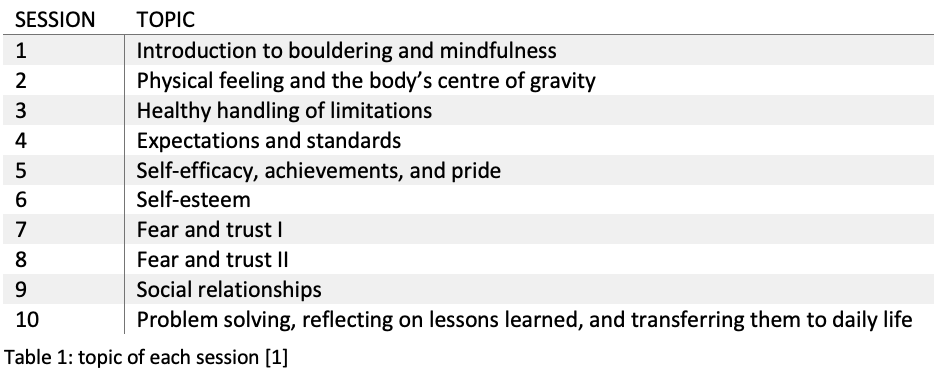
Bouldering is increasingly gaining popularity as a leisure sport as it’s both fun and good physical exercise. But perhaps it can even be used as treatment for depression. A recently published study tested the effects of bouldering therapy on depression and found that ten weeks of bouldering therapy was just as effective in reducing depressive symptoms as the usual treatment, cognitive behavioural therapy. This is an important first step in developing new and effective treatments for depression.
The need for new treatments for depression
Depression is one of the most common mental diseases all over the world and its prevalence is growing continuously. Especially in industrialized nations, the World Health Organisation predicts depression to be the most common impairment until 2030 (physical health issues included).[1] Next to antidepressant medication, cognitive behavioural therapy (CBT) is the treatment of choice for depression. However, current treatment options for patients are far from ideal. The large number of people with depressive symptoms who do not seek professional help (47.8% in Germany [1]) and who drop out before or during CBT treatment (15.9% at pretreatment; 26.2% during treatment [2]) highlights these problems. Stigmatization, inaccessibility, and unattractiveness of common therapies may cause these numbers. New and more attractive treatment approaches with empirically proven effectiveness are needed to address these problems.
A promising approach is the use of physical activity, as many studies have shown that this can be an effective treatment for depression and anxiety (i.e. yoga, walking fast over 30 min). [1][7][8] A fairly novel type of physical activity in therapeutic context is climbing. The positive physiological impact of climbing on health issues has previously been demonstrated for chronic pain, multiple sclerosis, cerebral palsy, and severe haemophilia A, and may also work for depression and anxiety. [1][3][5]
The StudyKuS (StudieKuS – Klettern und Stimmung; engl. Climbing and Mood) published 2020/03/14 in BMC Psychiatry investigates the effectiveness of the climbing discipline “bouldering” on depressive symptoms. In this discipline, the climbing routes are called “boulder problems” and their heights are limited to a few meters. This allows the climber to jump onto a mat instead of using a climbing harness and no further technics are needed.
To test the effectiveness of bouldering on depressive symptoms, the authors of the StudyKuS developed a paradigm with three treatment conditions: 1) bouldering psychotherapy (BPT), 2) a home-based exercise program (EP) with exercises focussing on similar muscles groups as climbing, or 3) classical cognitive-behavioural therapy (CBT). This method allowed them to evaluate the effects of BPT against normal training effects and the golden standard, CBT.
How does Bouldering Psychotherapy work?
But what does BPT entail? Participants are randomly assigned to a small group. The group takes part in ten sessions of two hours which contain a psychotherapeutic topic and active bouldering (table 1).

Every session is supervised by two psychotherapists who are also experienced boulderers. In advance, two members of the study administration, who obtained qualifications in “therapeutic climbing”, trained the therapists regarding the implementation of the bouldering therapy manual. All sessions start with an introduction (about 20 min), which includes a mindfulness exercise (e.g. breathing meditation), a presentation of the topic, and a short discussion about personal experiences regarding the topic. In the following action phase (about 75 min) the patients are split into two groups, each with one of the climbing therapists. The therapist shows topically related bouldering exercises that should trigger underlying emotions (e.g. anxiety) in the patients and help them overcome dysfunctional patterns. After the specific exercises, the patients get free time to work on their boulder problems, supported by other participants and the therapists. In the last phase (about 25 min) the patients review the session and the relevance of these experiences for their daily life. At the end of every session, the therapists and all patients perform a relaxation exercise. [1]
Bouldering Therapy is a promising new treatment for depression
From May 2017 to June 2018, a total of 198 Individuals had participated in the trial. All three groups experienced significant reduction in depressive symptoms, but the antidepressant effect of BPT was comparable to the effects of CBT and significantly exceeded those of the normal exercise program. Additionally, the participants in the BPT reported significantly higher improvements in anxiety, body image, and global self-esteem. [9]
These are exciting new results which support the development of BPT and could pave the road for an alternative evidence-based therapy. The future will show whether BPT can climb the ladder as validated behavioural therapy for depression!
References
[1] Dorscht, L., Karg, N., Book, S., Graessel, E., Kornhuber, J., Luttenberger, K. A German climbing study on depression: a bouldering psychotherapeutic group intervention in outpatients compared with state-of-the-art cognitive behavioural group therapy and physical activation – study protocol for a multicentre randomised controlled trial. BMC Psychiatry. 2019 May 17;19(1):154. doi: 10.1186/s12888-019-2140-5. PMID: 31101097; PMCID: PMC6525374.
[2] Fernandez, E., Salem, D., Swift, JK., Ramtahal, N. Meta-analysis of dropout from cognitive behavioral therapy: Magnitude, timing, and moderators. J Consult Clin Psychol. 2015 Dec;83(6):1108-22. doi: 10.1037/ccp0000044. Epub 2015 Aug 24. PMID: 26302248
[3] Engbert, K., Weber, M. The Effects of Therapeutic Climbing in Patients with Chronic Low Back Pain A Randomized Controlled Study. SPINE. 2011, Volume 36, Number 11, pp 1–8
[4] Luttenberger, K., Stelzer, E., Först, S. et al. Indoor rock climbing (bouldering) as a new treatment for depression: study design of a waitlist-controlled randomized group pilot study and the first results. BMC Psychiatry 15, 201 (2015). https://doi.org/10.1186/s12888-015-0585-8
[5] Steimer, J., Weissert, R. (2017) Effects of Sport Climbing on Multiple Sclerosis. Front. Physiol. 8:1021. doi: 10.3389/fphys.2017.01021
[6] Frühauf, A., Sevecke, K., Kopp, M. Ist-Stand der Fachliteratur zu Effekten des therapeutischen Kletterns auf die psychische Gesundheit – Fazit: viel zu tun. Neuropsychiatr. 2019, 33:1–7
[7] Phillips WT, Kiernan M, King AC. Physical Activity as a Nonpharmacological Treatment for Depression: A Review. Complementary health practice review. 2003;8(2):139-152. doi:10.1177/1076167502250792
[8] Carek PJ, Laibstain SE, Carek SM. Exercise for the Treatment of Depression and Anxiety. The International Journal of Psychiatry in Medicine. 2011;41(1):15-28. doi:10.2190/PM.41.1.c
[9] Karg, N., Dorscht, L., Kornhuber, J., & Luttenberger, K. (2020). Bouldering psychotherapy is more effective in the treatment of depression than physical exercise alone: results of a multicentre randomised controlled intervention study. BMC psychiatry, 20(1), 116. https://doi.org/10.1186/s12888-020-02518-y
